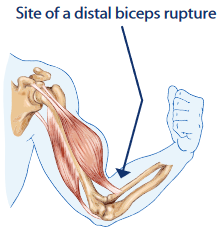nalco group
bone, muscle & joint pain physio
BOOK NOW / WHATSAPP ABOUT YOUR PAIN OR INJURY
- NOVENA 10 Sinaran Drive, Novena Medical Center #10-09, Singapore 307506
- TAMPINES 9 Tampines Grande #01-20 Singapore 528735
- SERANGOON 265 Serangoon Central Drive #04-269 Singapore 550265
Home > Blog > Hand Therapy & Customized Splinting > Finger, Hand, Wrist, Forearm & Elbow Conditions > Distal Biceps Rupture Hand Therapy
Distal Biceps Rupture Hand Therapy
“Working with a knowledgeable hand therapist can make the difference between success and failure in complex hand surgical cases. The therapist extends the continuum of our care, as well as functioning as coach and trainer for our patients.”
Marybeth Ezaki, MD, Past President, American Society for Surgery of the Hand
In Phoenix Rehab, our senior hand therapists are experienced licensed and dedicated therapists (physiotherapists and/or occupational therapists) who specialized ONLY in the rehabilitation, treatment and management of painful fingers, hands, wrists, forearm & elbow conditions, because of interest, passion and expertise.

Our biceps muscle is a two-part muscle on the front of your arm that has two portions:
- a proximal (near the shoulder) and
- a distal (near the elbow) portion
The biceps bends the elbow and turns the palm of the hand up toward the ceiling as if holding change or opening a door. A distal biceps rupture is when the portion of the biceps that attaches in the lower arm tears away from the bone.
What causes a distal biceps rupture?
A common cause for a distal biceps rupture is usually trauma involving the elbow.
For example, when a person attempts to pick up a heavy load, such as a box, and it is heavier than expected, the bent elbow is forcefully straightened against the lifting force causing the muscle to tear.
A distal biceps rupture may also occur as a result of a fall or accident.
What are the symptoms of a distal biceps rupture?
A distal biceps rupture can cause pain and bruising on the front of the arm.
Some individuals may hear or experience a “pop” and see a small ball or mass on the front of the arm. There may also be weakness when turning the palm up from a down position with activities such as using a screw driver.
What is the treatment for a distal biceps rupture?
There are two types of distal biceps ruptures, a partial rupture and a full rupture.
A partial distal biceps rupture means that some of the muscle remains attached to the bone in the lower arm near the elbow. Partial distal biceps ruptures are usually treated non-surgically.
Treatment may include
- medication for pain
- rest of the arm with a sling and
- hand therapy
A full rupture means the muscle has totally pulled away from the bone near elbow, and is repaired with surgery. Surgery involves reattaching the distal biceps to the bone though some patients choose not to have surgery.
The physician will discuss all options to decide the best treatment for each patient.
What can a hand therapist do for me?

A therapist stretching the elbow to improve motion
For the individual who does not have surgery, our senior hand therapists can help
- reduce pain
- decrease swelling
- maintain full motion of the elbow
- provide strengthening of the muscles of the elbow and shoulder
After surgery, our senior hand therapists can help reduce swelling and pain and increase movement of the elbow, wrist and hand. We may also fit the elbow with a protective orthosis.
It will take time to fully recover (up to 6 months as tendons take some time to strengthen), so the therapist will assist in modifying activities until it is safe to return to forceful activities, such as heavy lifting.
Patients may also receive the following hand therapy treatment modalities:
